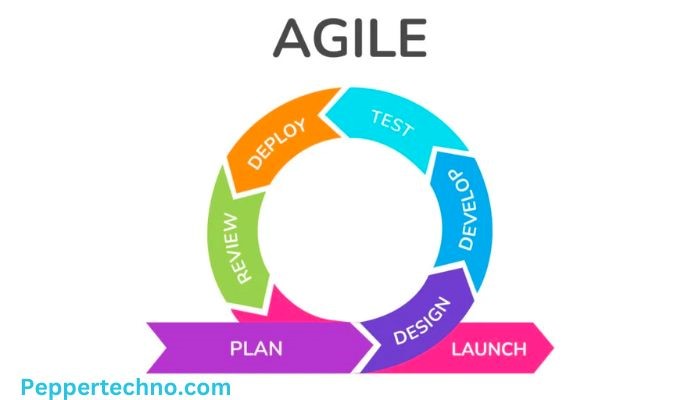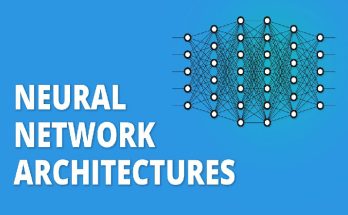The Art of Agile Development: Understanding Software Built and Delivered in Pieces is Known as
Agile development has become increasingly popular in the software industry in recent years. This approach to software development emphasizes flexibility, adaptability, and collaboration, allowing teams to respond quickly to changing requirements and deliver high-quality software products. In this article, we will explore what agile development is, why it is important, and the benefits it brings to software projects. We will also discuss the agile development process, the role of collaboration, tools and techniques for success, common challenges, and how to measure success. Finally, we will look at the future of agile development and emerging trends to watch out for.

What is Agile Development and Why is it Important?
Agile development is an iterative and incremental approach to software development that focuses on delivering working software in short iterations. It is based on a set of principles outlined in the Agile Manifesto, which include valuing individuals and interactions over processes and tools, working software over comprehensive documentation, customer collaboration over contract negotiation, and responding to change over following a plan.
In today’s fast-paced and constantly changing business environment, agile development is important because it allows teams to quickly adapt to changing requirements and deliver value to customers faster. Traditional waterfall development methods often result in lengthy development cycles and rigid processes that make it difficult to respond to changing customer needs. Agile development, on the other hand, enables teams to deliver working software in short iterations, gather feedback from customers early and often, and make adjustments as needed.
The Benefits of Agile Development for Software Projects
There are several benefits of using agile development for software projects. Firstly, agile development improves flexibility and adaptability. By breaking down the development process into small iterations, teams can quickly respond to changing requirements and priorities. This allows for greater flexibility in delivering value to customers and adapting to market conditions.
Secondly, agile development enables faster time-to-market. By delivering working software in short iterations, teams can release new features and updates more frequently. This allows businesses to stay ahead of the competition and respond to customer needs faster.
Thirdly, agile development increases customer satisfaction. By involving customers in the development process through regular feedback and collaboration, teams can ensure that the final product meets their needs and expectations. This leads to higher customer satisfaction and loyalty.
Lastly, agile development results in better quality and reduced risk. By continuously testing and integrating software throughout the development process, teams can identify and address issues early on. This reduces the risk of major defects and ensures that the final product is of high quality.
The Agile Development Process: Breaking Down Software into Pieces
The agile development process is based on an iterative and incremental approach. Instead of trying to deliver the entire software product at once, teams break it down into small, manageable pieces called user stories. These user stories represent specific features or functionalities that the software should have.
The agile development process typically consists of several phases, including planning, development, testing, and deployment. In each iteration, the team selects a set of user stories from the backlog, which is a prioritized list of all the user stories for the project. The team then works on developing and testing these user stories within a fixed time frame called a sprint.
User stories are an important part of the agile development process as they help define the requirements and scope of the project. They are typically written from the perspective of the end user and describe what the user wants to achieve with the software. User stories are prioritized based on their importance and complexity, and they serve as a guide for the team throughout the development process.
The Role of Collaboration in Agile Development
Collaboration is a key aspect of agile development. It involves bringing together cross-functional teams with different skills and expertise to work together towards a common goal. By fostering collaboration, teams can leverage the diverse perspectives and skills of their members to deliver high-quality software.
One of the important collaboration techniques in agile development is the daily stand-up meeting. This is a short, time-boxed meeting where team members gather to discuss their progress, any obstacles they are facing, and their plans for the day. The daily stand-up promotes transparency, accountability, and collaboration among team members.
Another important collaboration technique is the retrospective meeting. This is a meeting held at the end of each sprint to reflect on what went well, what could be improved, and what actions can be taken to address any issues or challenges. The retrospective meeting allows teams to continuously learn and improve their processes and practices.
In addition to collaboration within the team, involving stakeholders in the development process is also important. By including stakeholders such as customers, product owners, and business analysts in the development process, teams can ensure that the software meets their needs and expectations. This leads to higher customer satisfaction and a better end product.
Agile Development Tools and Techniques for Success
There are several tools and techniques that can help teams succeed in agile development. One popular tool is Jira, which is a project management tool that allows teams to plan, track, and manage their agile projects. Jira provides features such as backlog management, sprint planning, and issue tracking, which are essential for agile development.
Another popular tool is Trello, which is a visual collaboration tool that allows teams to organize and prioritize their work using boards, lists, and cards. Trello provides a simple and intuitive interface that makes it easy for teams to manage their tasks and collaborate effectively.
In addition to tools, there are also techniques that can help teams succeed in agile development. One such technique is pair programming, where two developers work together on the same code. This promotes knowledge sharing, code quality, and collaboration between team members.
Another technique is test-driven development (TDD), where tests are written before the code is implemented. This ensures that the code meets the specified requirements and helps identify any issues or defects early on.
The Importance of Continuous Integration and Delivery in Agile Development
Continuous integration and delivery (CI/CD) is an important aspect of agile development. It involves automating the build, testing, and deployment process to ensure that changes to the software are integrated and delivered quickly and reliably.
Continuous integration refers to the practice of regularly merging code changes from multiple developers into a shared repository. This allows teams to detect and resolve any integration issues early on, ensuring that the software remains stable and functional.
Continuous delivery, on the other hand, refers to the practice of automating the deployment of software to production environments. By automating the deployment process, teams can release new features and updates more frequently, reducing the time it takes to deliver value to customers.
There are several tools available for implementing CI/CD in agile development. One popular tool is Jenkins, which is an open-source automation server that allows teams to automate the build, testing, and deployment process. Another popular tool is Travis CI, which is a cloud-based continuous integration platform that integrates with popular version control systems such as GitHub.
Agile Development Best Practices for Teams
To succeed in agile development, teams should follow certain best practices. Firstly, it is important to set clear goals and priorities. This involves defining the project vision, identifying the key objectives, and prioritizing the user stories in the backlog. Clear goals and priorities help keep the team focused and aligned towards a common goal.
Effective backlog management is also crucial in agile development. Teams should regularly review and prioritize the user stories in the backlog based on their importance and complexity. This ensures that the team is working on the most valuable and achievable user stories at any given time.
Sprint planning and execution are also important best practices in agile development. During sprint planning, the team selects a set of user stories from the backlog and estimates the effort required to complete them. The team then commits to delivering these user stories within the sprint. During the sprint, the team works on developing and testing the user stories, and at the end of the sprint, they review the work done and gather feedback from stakeholders.
Common Challenges in Agile Development and How to Overcome Them
While agile development offers many benefits, there are also common challenges that teams may face. One common challenge is scope creep, which refers to the tendency for the scope of the project to expand beyond what was originally planned. To overcome scope creep, teams should have a clear definition of the project scope and regularly review and prioritize the user stories in the backlog.
Another common challenge is team communication. Agile development relies heavily on effective communication and collaboration among team members. To overcome this challenge, teams should have regular communication channels such as daily stand-up meetings and use collaboration tools such as Jira or Trello to keep everyone informed and aligned.
Measuring Success in Agile Development: Metrics and KPIs
Measuring success in agile development is important to track progress and identify areas for improvement. There are several metrics and key performance indicators (KPIs) that can be used to measure success in agile development.
One key metric is velocity, which measures the amount of work completed by the team in each sprint. Velocity can be used to estimate how much work the team can complete in future sprints and track their progress over time.
Another metric is burn-down charts, which show the remaining work in the backlog over time. Burn-down charts can help teams visualize their progress and identify any issues or bottlenecks that need to be addressed.
Other KPIs that can be used to measure success in agile development include customer satisfaction, defect density, and cycle time. By tracking these metrics and KPIs, teams can identify areas for improvement and make data-driven decisions to deliver better software.
The Future of Agile Development: Trends and Innovations to Watch Out For
The future of agile development is shaped by emerging trends and innovations. One such trend is DevOps, which is the integration of development and operations teams to improve collaboration and streamline the software delivery process. DevOps emphasizes automation, continuous integration, and continuous delivery, and it is becoming increasingly important in agile development.
Another trend is agile scaling, which refers to the application of agile principles and practices to large-scale projects and organizations. As agile development becomes more popular, organizations are looking for ways to scale agile practices to larger teams and projects. This includes implementing frameworks such as SAFe (Scaled Agile Framework) or LeSS (Large-Scale Scrum) to coordinate and align multiple agile teams.
Conclusion:
Agile development has become increasingly popular in the software industry due to its flexibility, adaptability, and focus on collaboration. It allows teams to quickly respond to changing requirements, deliver value to customers faster, and improve customer satisfaction. By breaking down software into small iterations, involving stakeholders in the development process, and using tools and techniques for success, teams can overcome common challenges and measure success in agile development. As emerging trends such as DevOps and agile scaling shape the future of agile development, it is important for teams to stay updated and embrace these innovations to stay competitive in the software industry.



